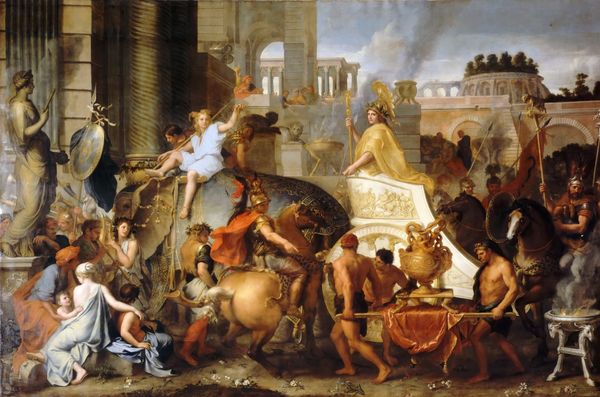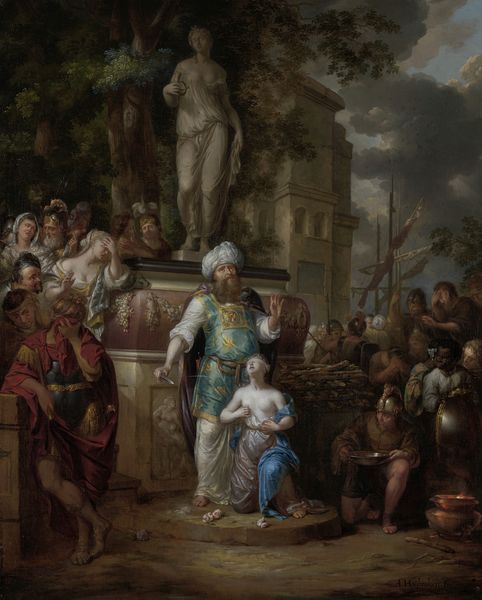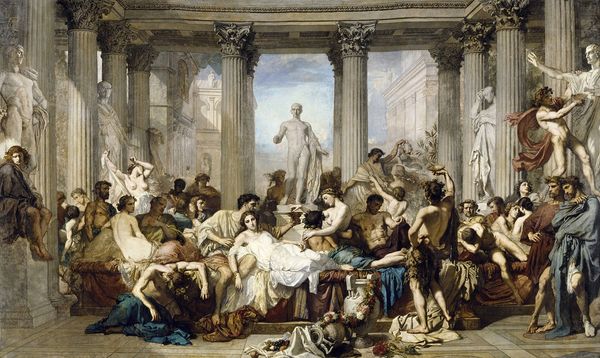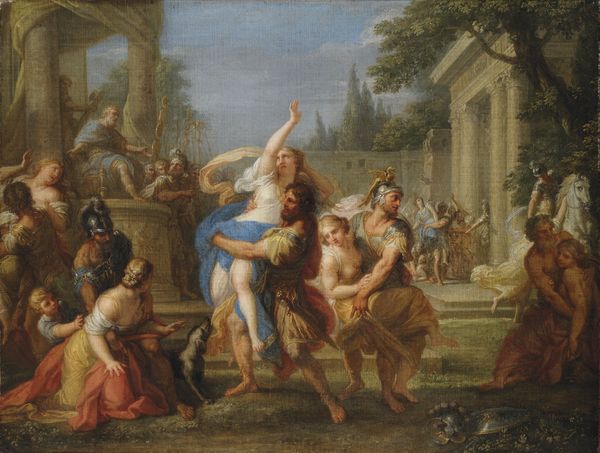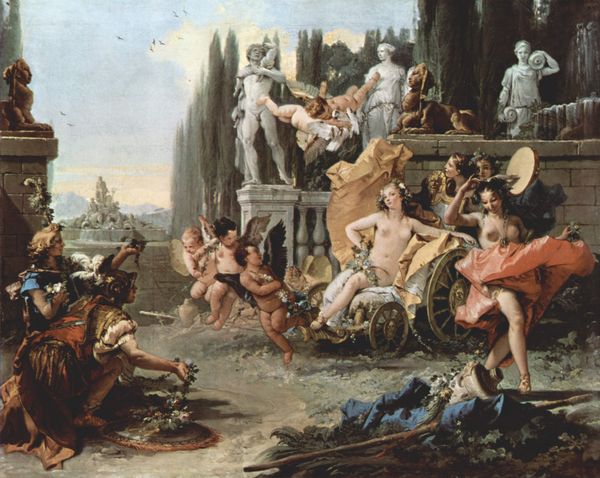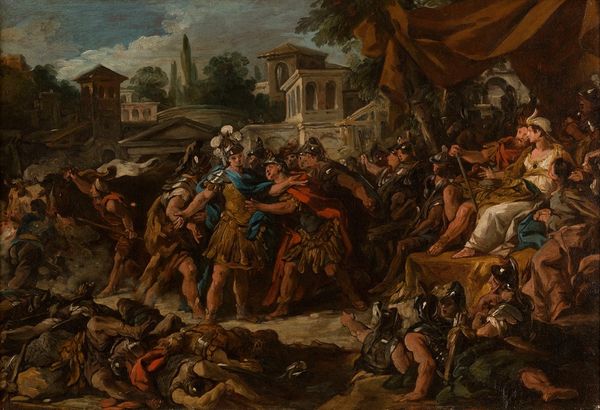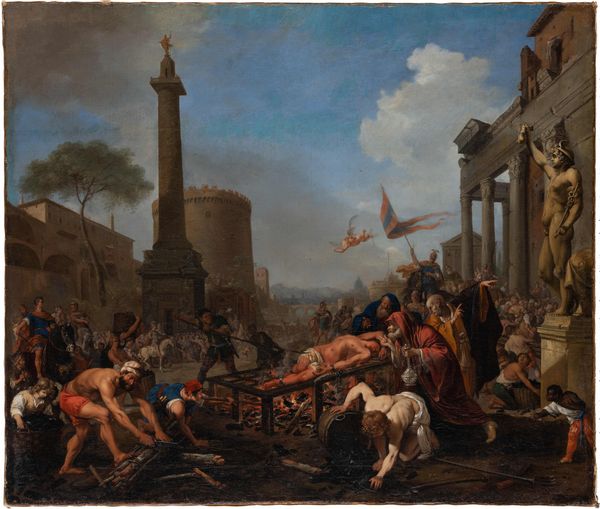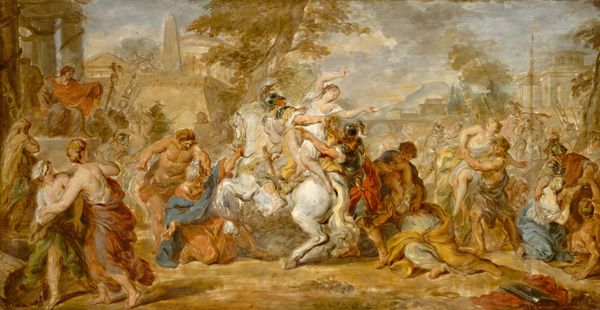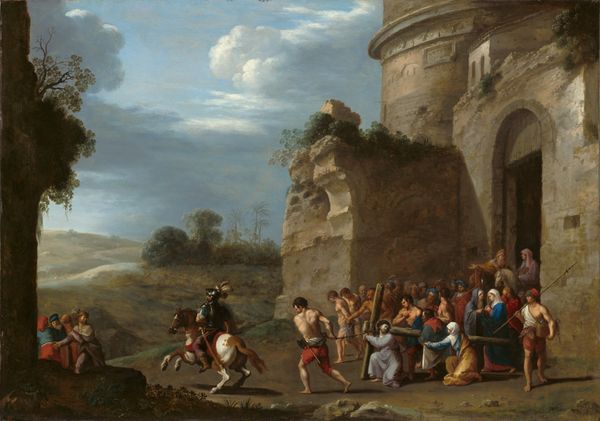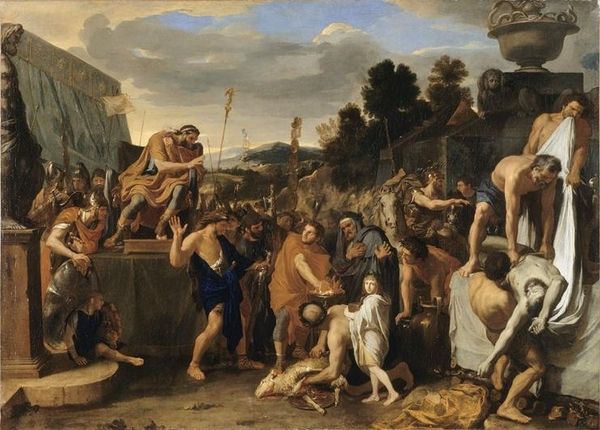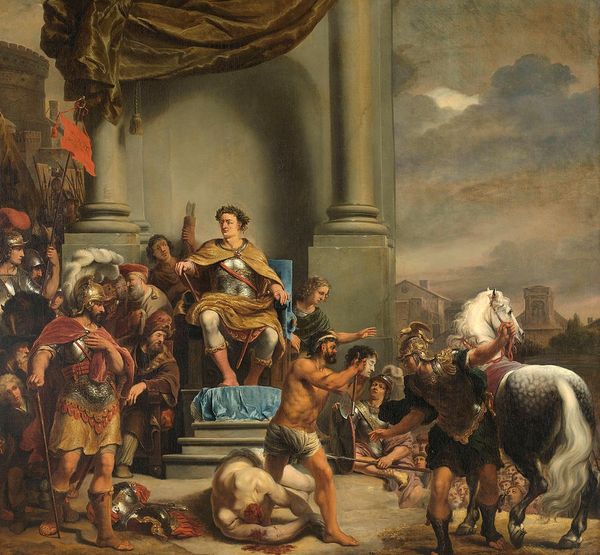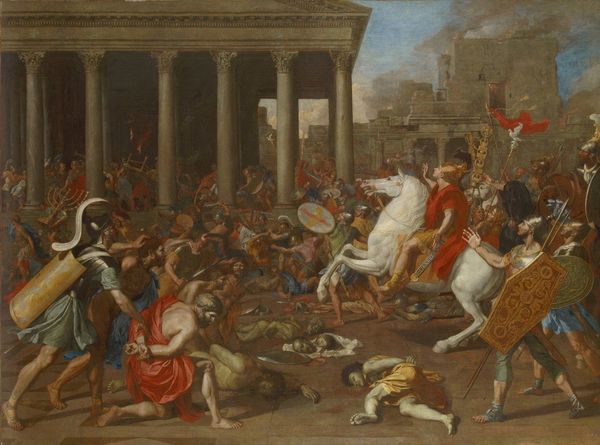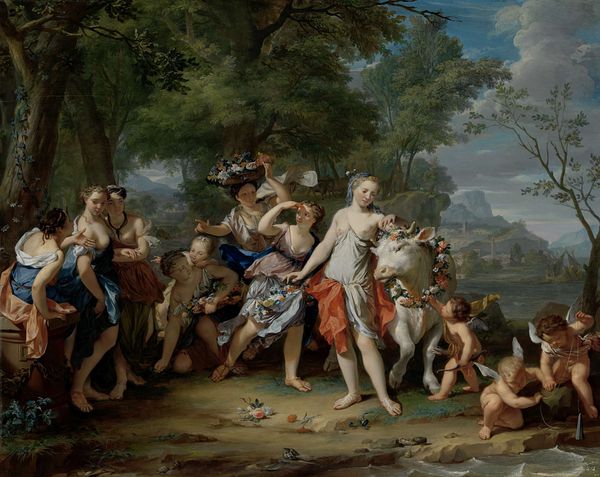
oil-paint
#
allegory
#
baroque
#
oil-paint
#
landscape
#
figuration
#
oil painting
#
history-painting
Dimensions: height 53 cm, width 69 cm
Copyright: Rijks Museum: Open Domain
Curator: So, this is Jacques Ignatius de Roore’s “Jeroboam Sacrificing to the Idols,” dating from somewhere between 1704 and 1744. It’s rendered in oil paint. Editor: Wow, there's so much going on! The composition is really busy, almost chaotic. What catches your eye when you look at this piece? Curator: I'm drawn to the means of production here. Look at the labor being depicted, not just in the sacrifice itself, but the implications of idolatry in that moment. De Roore is showing us the material investment – the animals, the altars, even the clothing – that underpin this act of supposed devotion. What does it *cost* these people to turn away from their faith? Editor: I hadn’t thought about it like that, almost as a business transaction. Is he critiquing the opulence of idolatry, perhaps? Curator: Possibly. Consider the social context too. Baroque art often served powerful patrons, but by depicting what's essentially a rejection of monotheism, is De Roore subtly challenging those structures of power, the Church for instance? How does the materiality of this scene – the oil paint itself, the textures he creates – contribute to this sense of unease or critique? Is he flaunting wealth or is it meant to provoke an internal sense of questioning? Editor: That’s fascinating! The smoke rising from the altar is almost obscuring things, so the materiality itself feels unstable. I never considered the oil paint contributing to the message like that. Curator: Exactly. And remember, oil paint at this time was also a commodity. Thinking about the paint itself connects this biblical scene to De Roore's own present. So it gives you a perspective of not just devotion, but of production. Editor: That really shifts my perspective. It makes me wonder how much the art market itself influenced how these stories were told. Curator: Precisely. Considering the means of production helps us question what this painting is actually "sacrificing".
Comments
rijksmuseum about 2 years ago
⋮
Jeroboam, the King of Israel, enjoined his people to idolatry to prevent their contact with the Kingdom of Judah. When he tried to arrest a defiant priest during a pagan sacrifice, his hand withered and the altar shattered. He had trespassed God’s First Commandment: ‘Thou shalt have no other gods before me.’ De Roore impressed his contemporaries with such depictions of complex stories.
Join the conversation
Join millions of artists and users on Artera today and experience the ultimate creative platform.
